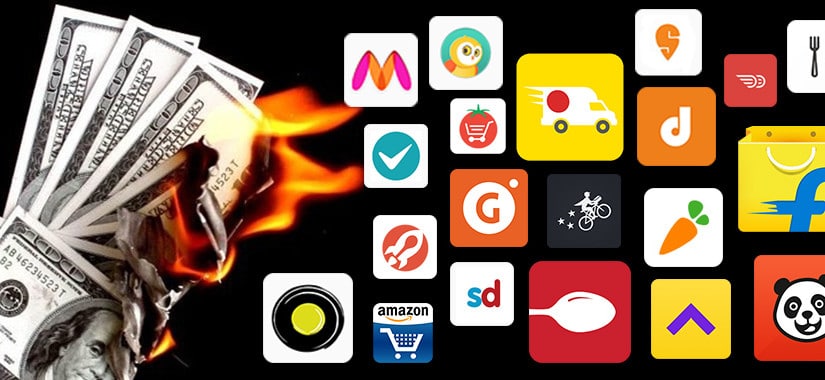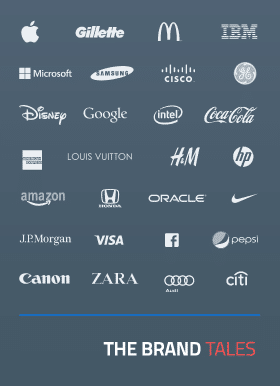As some people say, nothing in this world comes for free. The below mentioned quote clearly states the same in case of today’s business world.
If you are not paying for the product, then you are the product being sold
This is certainly true in today’s startup era. So what does this really mean in the world of today’s tech startups. If a company is offering something for free, then it would be acquiring customers through their signups on their apps/websites. The interest shown by the customer by signing up for these services or using it in turn is used to raise funding from investors to grow the business. People are bombarded with advertisements through which many of the companies earn money and grow. This is one of the greatest business models which results in a win win situation for all the stake holders and the product too when the product makes enough money to break-even.
But does giving freebies and huge discounts really help in creating a sustainable business is a bigger question. This actually depends on the product being given as free and the business model on whose foundation the company is standing.
Whether the company would be profitable or not, the founders are certainly getting rich and benefiting from the inflow of cash from investors who are just seeing the number of customers acquired.
Facebook & Google are the two companies which offer their core products for free for the end users and have been very successful. One of the reason for their success is their business model to make revenue, which is totally different from the other companies/startups which are giving away products for free or giving huge discounts. The another important strong reason is that their products are really unique and have been executed and implemented in unique ways.
A company which has to survive and grow by selling products made by others (including services being provided by others) will certainly not self sustain on a longer run if they are acquiring customers by giving huge discounts and freebies by burning cash. Investors with deep pockets who have made a bet on these companies might help them to be in business for certain number of years. Examples of such companies are those operating in the field of e-commerce, transport service and hyper-local startups. Currently many of them appear to be doing very well as they are being judged only based on their valuation. Which is mostly over valued just on the basis of the number of customers they have and the daily transactions that are happening just because the products are offered with huge discounts.
Businesses are meant to make money, break-even after few years, self sustain and add value to the market and to the society. Good businesses are certainly not meant to eat up money to give freebies without making a single penny profit for years. On a longer run, giving and taking these freebies would affect the market adversely. It would hurt the investor, company, its employees, customers, business ecosystem and the market as a whole.
One of Silicon Valley’s Most Esteemed VCs Chamath Palihapitiya states that “Time will tell whether any of those can become a real business. If a shoe costs $20, Nike doesn’t sell it for $14. They sell it for $400. We have to get back to this world of having pretty reasonable discipline on business models and understanding that many of these gross-margin businesses will never, never break even or become profitable.” [ref]
This is mostly happening when the ideas on which the businesses are being built are not relatively original and people are just replicating the products which have been successful in other markets in terms of profit or have got huge valuations.
Investors have been pouring money to e-commerce companies like Flipkart, Snapdeal & Shopclues to make them highly valued startups in terms of valuation and with no profit till date.These are replicas of Amazon which became profitable after several years of operations but if seen in depth they had a totally different business model which evolved with time. Jeff Bezos, the person who created Amazon had a bigger vision to revolutionise the business and he gave importance to product design and created the Kindle. It has changed the way people buy and read books. Also providing a platform for independent writers to become publishers. In a way by creating a new segment, Amazon has become the leaders in this category. This created a whole new market segment and Amazon has become a true tech company by creating AWS (Amazon Web Services) which provides cloud computing services.
But in the case of the other e-commerce companies mentioned above, they are just platforms for sellers to sell their products and don’t have any highly innovative product as such which can keep the engine running if the external funding stops and the reserves are drained.
It is commendable that Flipkart was the company which made e-commerce popular in India by introducing Cash on Delivery system when people were skeptical to buy products online. But the way they have been running business in not very promising as Flipkart has become a monster hungry for cash to sustain. It is in news that Flipkart is in talks to raise $1 Billion likely in a down round where company would be valued at a lesser valuation compared to the previous valuation.
To succeed or to just survive and try to grow, they are now left with no other much option and resort into any one of the below options which is visible in the market
- If a company has cash reserves to burn, then providing huge discounts to keep the customers coming back to them and not to go to the competition
- Next step is to buy out the small and budding competitors in the name of aqui-hiring who are having less capital and who will certainly pose a threat with their better solutions in the coming days. One example is acquisition of Taxi for Sure by Ola cabs in India
- Start betting on new product startups either to diversify the company portfolio or to integrate the tech or innovative products of the new startup in their product or system.
Every business needs both idea and money to start and grow. The bigger the idea, bigger the amount required initially to build the product, infrastructure and resources even before the product hits the market. Once the product hits the market, customer acquisition is an important aspect.
Cost of customer acquisition usually involves
- Advertising
- Referrals
- Providing discounts with either lower margins or by taking a loss initially
Apart from the acquisition cost, there is also the cost of retaining the customer which would mostly involve
- Customer service after sales
- Discounts (Certainly by not making losses. Mostly the profit margins are kept low for customer retention while giving discounts)
Even in traditional businesses companies provide discounts to retain the customers. These discounts are reasonable where they would be making profit with lower margins and these companies mostly do it to clear their inventory of old stock.
In most of the companies but not all related to e-commerce and hyper local, the cost of customer retention to make the customer get back to either buy the product or use the service is equal to the cost of customer acquisition. It is like the same old customer is being acquired once again.
If this is how the things go then it is not just the customer acquisition cost which needs to be considered. The main factor which needs to be kept in mind would be the customer retention cost. Which involves cost for customer care and also the huge discounts being offered to the already existing customers. Expenditure on customer retention cost is well justified if any business is spending amount to maintain the already built relation during the acquisition without taking a loss. This shouldn’t involve huge discounts and freebies even after several years.
These startups have certainly created convenience for the customers. But to sustain in the market and to beat the competition, they have been burning huge amount of cash. What we need to see is whether these startups will be able to really self sustain and break-even in the coming years.
When one is providing discounts to reach the customer, they need to understand what if they stop giving discounts, will the customer get back to them? Today’s startups appear to have failed to understand the psychology of their customers who are on a constant look out for discounts. Mint had reported recently that one of the India’s largest e-commerce giant Snapdeal’s monthly revenues have declined since November, partly because the company has been forced to cut spending on discounts and advertising since then. This clearly indicates that just discounts will never help a business to sustain unless they create and experiment with products/services which generate value for the customers.
Few of these companies might become successful but for sure it won’t be because of the products they created. Instead it would be because they had cash to burn from investors to buyout companies which had better products.








Social Profiles